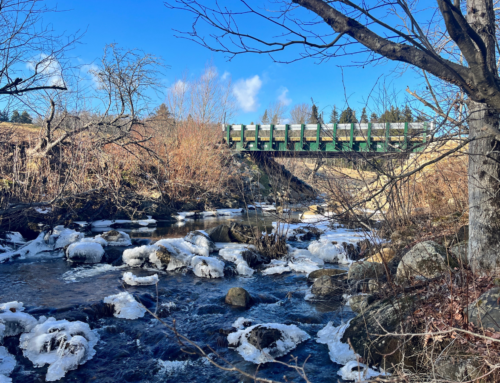March 9, 2012
Marie Levesque Caduto, Watershed Coordinator
VT ANR I Dept. of Environmental Conservation
100 Mineral Street, Suite 303
Springfield, VT 05156-3168
CRC comments on the Final Draft Basin 10 Water Quality Management Plan
As the primary citizen watchdog and steward of the Connecticut River from source to sea, the Connecticut River Watershed Council works to preserve the health of the river and its tributaries. As such, we are formally submitting comments on the State of Vermont’s water quality management plan for Basin 10 (the Ottauquechee and Black river watersheds).
First we would like to thank you for your efforts over the past several years and for helping to bring this plan to fruition. We applaud and appreciate the hard work of all who participated in the process, including the Two Rivers-Ottauquechee Regional Commission, the Black River Action Team and the Greater Upper Valley chapter of Trout Unlimited.
In general CRC supports the recommendations and actions to improve and protect these waters. We agree that the lack of riparian buffers is a major cause of water quality and habitat problems in the Basin, and that sediment and silt are by far the most visible causes of degradation. We also concur that the presence of obsolete dams causes undue stress to the rivers and harms their ecological functions. As the Plan points out, excess nutrients, stormwater runoff and combined sewer overflows also are issues that need to be addressed. With that in mind, we are supportive of the Plan’s Top 10 recommendation to “maintain and expand the bacteria monitoring program to cover the entire Basin.” CRC is committed to helping the Agency of Natural Resources in this regard.
Since this Plan will be used by ANR to guide decisions regarding allocation of resources as well as your review of permit applications for potential impact on water quality, CRC believes the following additions and/or revisions should be made to the Plan prior to it being adopted:
Existing Uses- On page 17, the Plan states that recreational uses (such as boating, swimming and fishing) should be “preserved and improved.” Unfortunately ANR continues to use an outdated and inferior process to identify existing uses, especially in terms of fishing. Specifically we object to the double standard used by ANR for determining existing uses on lakes and ponds versus flowing waters. Just as ANR “presumes that all lakes and ponds have existing uses of fishing, contact recreation and boating”, so to should ANR assume that all flowing waters have existing uses of fishing, contact recreation and boating. ANR’s policy states that this “simplifying assumption” is being used for lakes and ponds because of “the well known and extensive use of these types of waters for these activities based upon their intrinsic qualities.” This same simplifying assumption holds true for all flowing waters. Vermont’s rivers and brooks are no less intrinsic and have no less extensive use for recreational activities than our lakes and ponds. In fact many small ponds in Basin 10 get little or no contact recreation, boating or fishing use, while most if not all of our small brook trout streams have swimmers and fishermen who frequent their waters. By using such a double standard ANR has placed the burden of proving existing uses for flowing waters on the individual, organization etc. while giving lakes and ponds a “free pass” so to speak. ANR should revise this process for Existing Use determinations in this Plan and in all other basin plans already adopted by the State.
Flow Alteration – CRC appreciates the recommendation to remove the Springfield Reservoir Dam in Weathersfield, but believes a higher priority should be given to additional obsolete dam removal projects in Basin 10. According to the Plan there may be as many as 45 obsolete dams that serve no current purpose, such as hydropower. Their continued presence prohibits aquatic organisms passage, contributes to water quality degradation, water temperature increases and streambank instability. As such, the recommendations on page 59 of the Plan should be given the highest priority.
Buffer regulations on Ag land -Recommendation #25 on page 66 of the Plan says the State of Vermont should enforce its own “AAP buffer requirements, expand their width and require at least shrub coverage.” We concur. As we all know, a ten (10) foot buffer of grass does nothing to prevent erosion, sedimentation, water temperature increases or in any way help prevent nonpoint source pollution runoff. In addition, since this recommendation is one that the State of Vermont has complete control over (e.g. no federal approval is needed), we ask that this recommendation be given the highest priority.
Nutrient Loading- CRC has been particularly interested in the recent discussions between the New England states and the U.S. EPA about revisions to the 2001 Long Island Sound TMDL. CRC encourages the State of Vermont to work with the New England Interstate Water Pollution Control Commission, U.S. EPA, and the other states to: Require all dischargers to identify both influent and effluent nutrient levels; Ensure that development and implementation of CSO long-term control plans includes nutrient removal optimization strategies; Include regulated stormwater discharges in implementation plans; Commit to additional in-stream monitoring to capture changes in nutrient loading reductions; Evaluate nonpoint source load reductions; and Direct funds to high priority projects on agricultural land.
Thank you for the opportunity to comment on this draft Plan. We appreciate the work that has been done on the Basin 10 Plan and look forward to working with ANR to support the State of Vermont’s efforts to improve water quality and limit potential impacts to all our water resources.
Sincerely,
Ron Rhodes, North Country River Steward
Connecticut River Watershed Council






